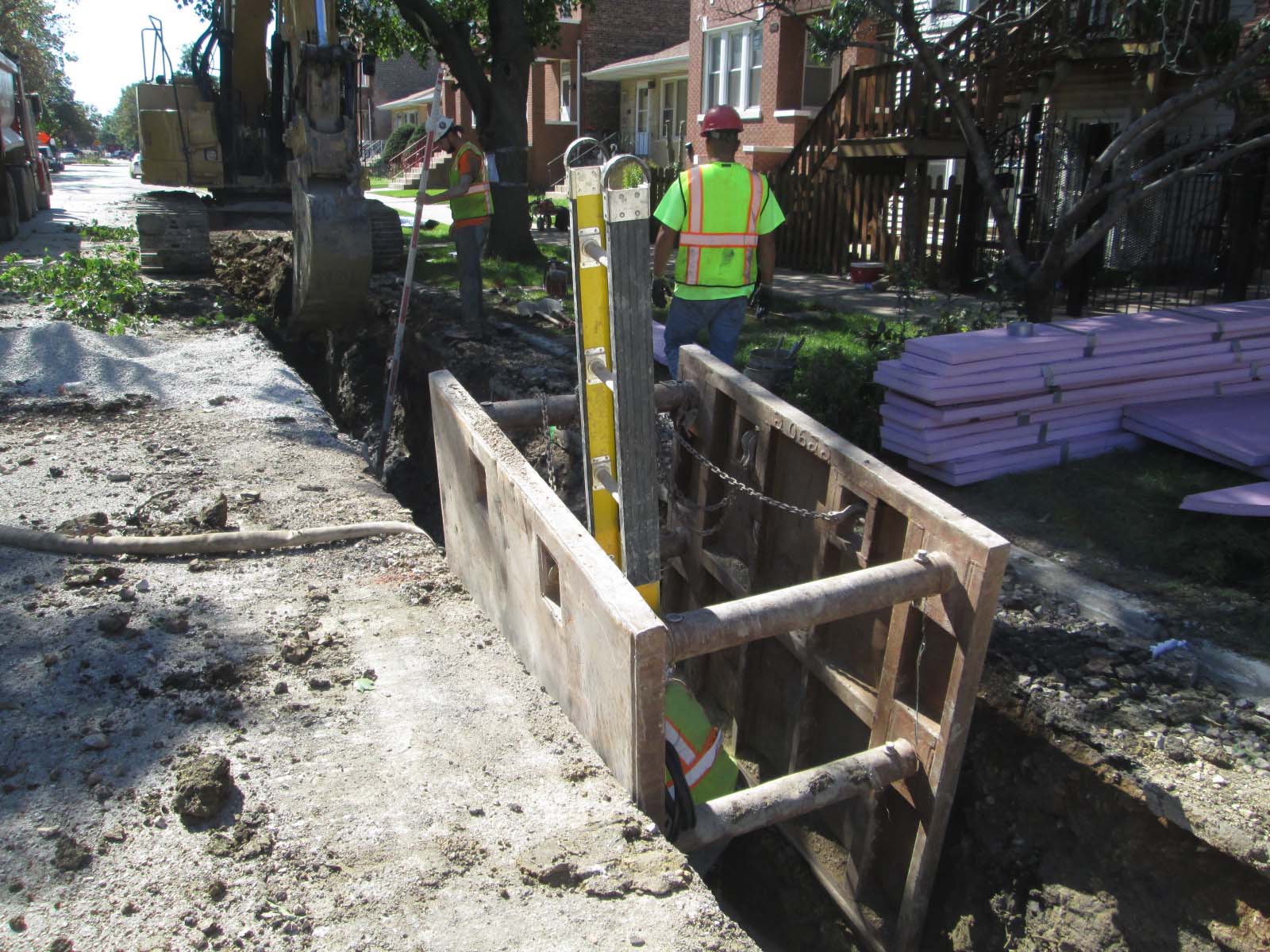Trenching Safety and Excavation Hazards
Trenching and excavation activities occur regularly throughout the U.S. and with warm weather on the horizon these activities will be increasing soon. Unfortunately injuries and deaths due to trenching accidents are still occurring each year. The primary cause for these injuries and deaths is due to cave-in.
So what exactly is a trench? A trench is defined as a narrow excavation made below the surface of the ground and is not greater than fifteen feet in width when measured from the bottom. The depth of an excavation does not play a role in determining if it is a trench, but certainly plays a major role in trench safety and protection requirements.
When a trench reaches five feet or more in depth trench protection must be utilized to protect the workers who must enter the trench. Time in the trench is not to be a consideration, once the depth reaches five feet protection must be used, period! In some circumstances trenches even less than five feet in depth must be protected from cave-in. If any trench, regardless depth, is at risk of collapsing workers must be protected prior to entering.
This brings us to the role of the excavation competent person. This individual must be capable of identifying existing excavation hazards or potential hazards within the trench, in the surrounding area, or due to work practices. In addition the competent person must have the authority to cease activities until corrective actions can be implemented. The competent person must know the different types of trench safety protection as well as their proper application.
There are several types of protective systems that can be used to protect employees from deadly cave-ins. Sloping or benching of the soil are two such methods. When using either of these two methods knowing the type of soil is required to determine which method is allowed for proper protection and to be within compliance of the OSHA Excavations Standard, Subpart P. Additional means of trench protection include support systems and shields such as shoring and trench boxes. Not all trenches are the same; in fact each one has its own characteristics and can quickly change due to soil type, surface encumbrances, the presence of underground utilities, changing weather conditions, etc. Therefore the competent person must closely monitor the protective system in place to determine if it is in fact providing the proper protection.
Being able to exit a trench in the event of a cave-in is also critical. In any trench four feet in depth or greater the workers within the trench must be provided with proper access and egress by means of stairs, ladders or ramps. In addition employees must not have to travel more than twenty-five feet laterally to reach any of these points of egress from within the trench.
Although cave-in is the largest excavation hazard when working in trenches it is not the only hazard to be considered. Exposure to falling materials, fall protection, struck by equipment, electrical safety in wet conditions, bad atmospheres, and stability of adjacent structures must also be considered prior to trenching operations.
Identifying the hazards and thinking about potential hazards must be a part of trenching and excavating safety operations. As previously stated the competent person must be knowledgeable of trenching hazards and correct those issues identified. However, the competent person is not normally the only individual involved in the operation. Any employee who must work in or near trenches must also know the signs of trouble. This can be accomplished through proper training prior to starting the job and good leadership once the work begins.








